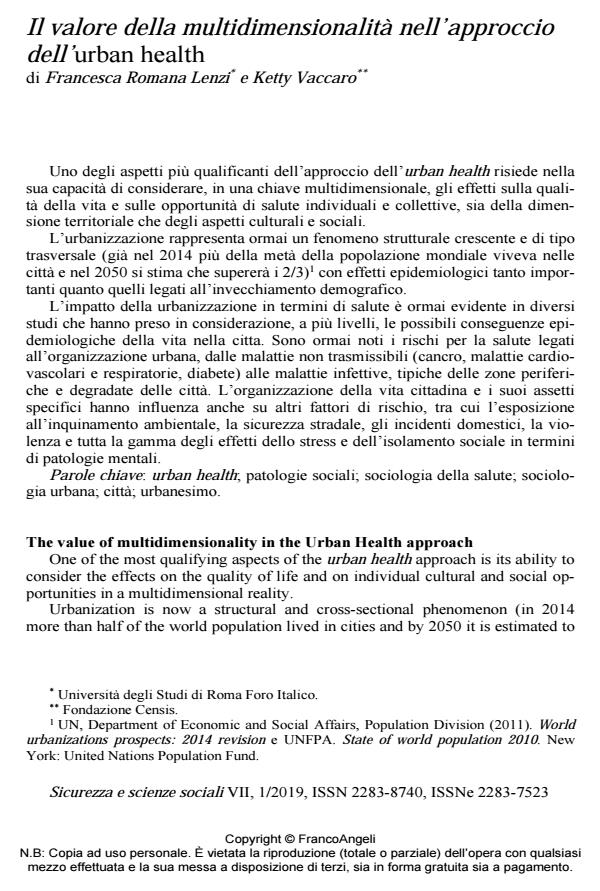The value of multidimensionality in the Urban Health approach
Journal title SICUREZZA E SCIENZE SOCIALI
Author/s Francesca Romana Lenzi, Ketty Vaccaro
Publishing Year 2019 Issue 2019/1
Language Italian Pages 15 P. 192-206 File size 275 KB
DOI 10.3280/SISS2019-001016
DOI is like a bar code for intellectual property: to have more infomation
click here
Below, you can see the article first page
If you want to buy this article in PDF format, you can do it, following the instructions to buy download credits

FrancoAngeli is member of Publishers International Linking Association, Inc (PILA), a not-for-profit association which run the CrossRef service enabling links to and from online scholarly content.
One of the most qualifying aspects of the urban health approach is its ability to consider the effects on the quality of life and on individual cultural and social opportunities in a multidimensional reality. Urbanization is now a structural and cross-sectional phenomenon (in 2014 more than half of the world population lived in cities and by 2050 it is estimated to exceed 2/3) with epidemiological effects important as much as those related to demographic aging. The impact of urbanization on health is now evident in many studies that consider the possible epidemiological consequences of city life. Risks for the health related to the urban environment are today an issue, such as non-communicable diseases (cancer, cardiovascular and respiratory diseases, diabetes) and infectious diseases, typical of peripheral and degraded city areas. The organization of city life and its specific structures also influence other risk factors, including exposure to environmental pollution, road safety, domestic accidents and stress and social isolation effects as mental illness.
Keywords: Urban health; social diseases; sociology of health; urban sociology; city; urbanism
- Social determinants of vulnerabilities in type 2 diabetes: a call to action F. R. Lenzi, T. Filardi, in Journal of Endocrinological Investigation /2022 pp.841
DOI: 10.1007/s40618-022-01952-x - Mapping obesity and diabetes’ representation on Twitter: the case of Italy Francesca Romana Lenzi, Ferdinando Iazzetta, in Frontiers in Sociology 1155849/2023
DOI: 10.3389/fsoc.2023.1155849
Francesca Romana Lenzi, Ketty Vaccaro, Il valore della multidimensionalità nell’approccio dell’urban health in "SICUREZZA E SCIENZE SOCIALI" 1/2019, pp 192-206, DOI: 10.3280/SISS2019-001016